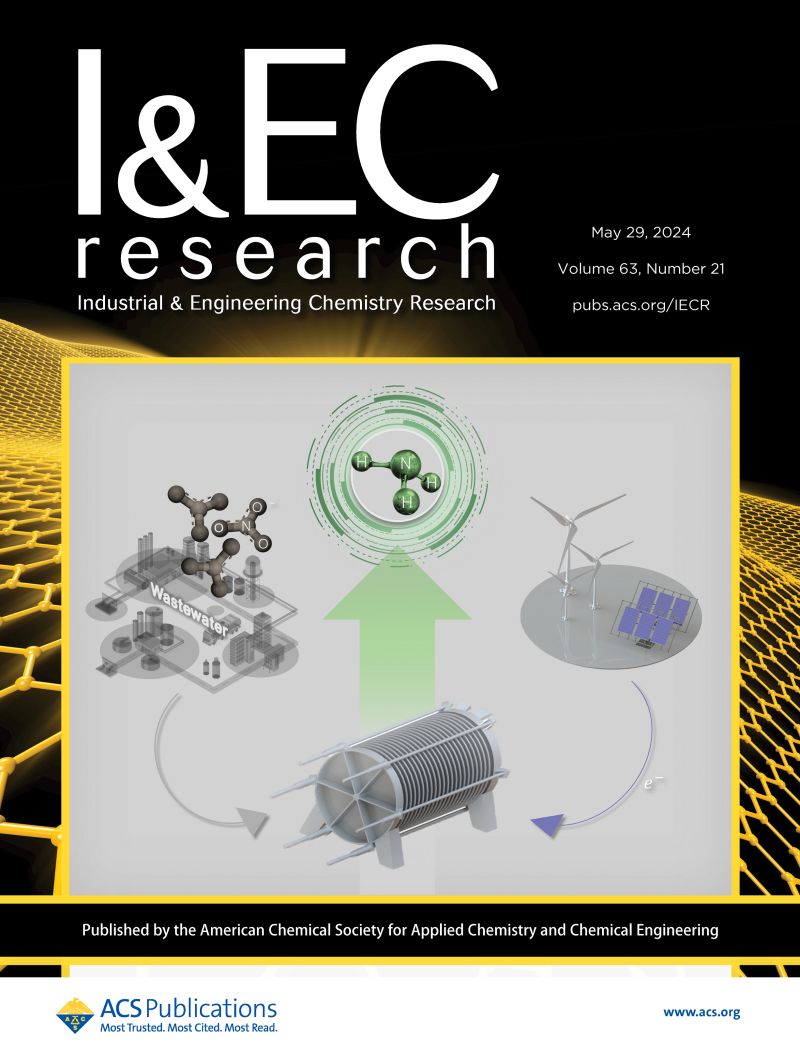Efficiency and Mechanism of SF6 Degradation by Dielectric Barrier Discharge Coupled with the ZSM-5 Catalyst
IF 3.8
3区 工程技术
Q2 ENGINEERING, CHEMICAL
引用次数: 0
Abstract
The efficient degradation of sulfur hexafluoride (SF6) is a challenging task due to its stable chemical structure. In this work, dielectric barrier discharge (DBD) technology was coupled with the ZSM-5 catalyst to degrade SF6. The suitable particle size of ZSM-5 was selected by matching with the discharge performance of DBD. Based on this, the effects of input power, gas concentration, gas flow rate, catalyst particle size, and catalyst loading on the degradation efficiency of SF6 were discussed. The experimental results showed that the concentration and flow rate of SF6 were negatively correlated with its degradation rate (DRE) but positively correlated with the energy yield (EY). Under the conditions of an input power of 60 W, SF6 flow rate of 100 mL/min, and catalyst usage of 4 g, the SF6 of 1.5% concentration maintained 100% DRE for 75 min. Even when delayed to 95 min, the DRE was 98.05%, and the EY reached 9.707 g/kW h. The results showed that the synergistic effect of DBD and ZSM-5 provides a new way to degrade SF6 under mild conditions with a high efficiency and low energy consumption. It can be expected that the satisfactory degradation efficiency, low discharge power, and low cost of ZSM-5 will endow this technical route with good application prospects.

介质阻挡放电耦合ZSM-5催化剂降解SF6的效率及机理
由于六氟化硫(SF6)的化学结构稳定,其高效降解是一项具有挑战性的任务。本研究采用介质阻挡放电(DBD)技术与ZSM-5催化剂结合降解SF6。通过与DBD的放电性能相匹配,选择了ZSM-5的合适粒度。在此基础上,讨论了输入功率、气体浓度、气体流速、催化剂粒径、催化剂负载等因素对SF6降解效率的影响。实验结果表明,SF6的浓度和流速与其降解率(DRE)呈负相关,而与产能率(EY)呈正相关。在输入功率为60 W、SF6流量为100 mL/min、催化剂用量为4 g的条件下,1.5%浓度的SF6在75 min内保持100% DRE,延迟至95 min后,DRE为98.05%,EY达到9.707 g/kW h。结果表明,DBD与ZSM-5的协同作用为在温和条件下高效低耗地降解SF6提供了一条新途径。ZSM-5具有良好的降解效率、低放电功率、低成本等特点,具有良好的应用前景。
本文章由计算机程序翻译,如有差异,请以英文原文为准。
求助全文
约1分钟内获得全文
求助全文
来源期刊

Industrial & Engineering Chemistry Research
工程技术-工程:化工
CiteScore
7.40
自引率
7.10%
发文量
1467
审稿时长
2.8 months
期刊介绍:
ndustrial & Engineering Chemistry, with variations in title and format, has been published since 1909 by the American Chemical Society. Industrial & Engineering Chemistry Research is a weekly publication that reports industrial and academic research in the broad fields of applied chemistry and chemical engineering with special focus on fundamentals, processes, and products.
 求助内容:
求助内容: 应助结果提醒方式:
应助结果提醒方式:


